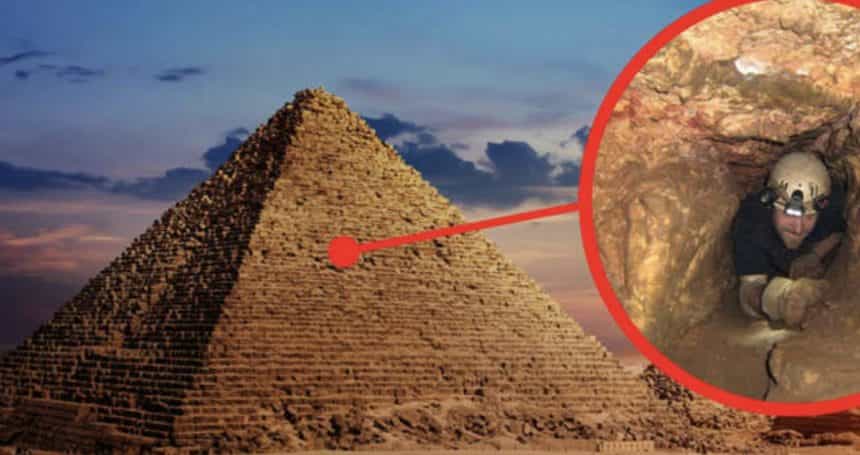Despite extensive exploration, these structures, dating back over 4,000 years, still hold secrets.
The Egyptian pyramids are incredibly complex constructions. According to the Smithsonian Museum of Natural History in the United States, the pyramids comprised a complex of funerary buildings, including temples, chapels, and other tombs, all intended to serve as final resting places for pharaohs and other notables. Despite extensive investigation, the pyramids still hold secrets.
Internally, each pyramid is composed of multiple rooms and passages, including the king’s burial chamber. However, due to its design to prevent looting in the pharaohs’ tombs, access is not easy, and the interior of these structures is not fully known.
What is the Interior of the Pyramids of Giza Like?
Among the pyramids at Giza stands the Khufu Pyramid (the oldest and tallest of the three), along with its two neighbors, the Pyramids of Khafre and Menkaure, made of solid stone masses, according to the Encyclopedia Britannica. Because they are some of the most extensively explored pyramids by scholars, it is possible to have detailed knowledge about some of their interior chambers.
For instance, the Pyramid dedicated to Khufu, the most powerful ruler of the Old Kingdom of ancient Egypt (c. 2690-2180 BC), features a central room known as the King’s Chamber, believed to be the resting place of the pharaoh.
In addition to this area, the pyramid also houses the Queen’s Chamber (the room where Khufu’s wife would have been buried) and an elevated passage with ornate walls called the Great Gallery, which provides access to the king’s tomb.
Currently, scientists are working to develop technologies to uncover more of these constructions’ hidden features. In 2017, as part of a project named Scan Pyramids developed by the University of Cairo (Egypt), researchers identified the existence of a large hidden void above the Grand Gallery. This area, nicknamed the Great Void, is approximately 6 meters high and almost 30 meters long, and its purpose is still unknown.
A study published in 2022 in the Journal for Advanced Instrumentation in Science outlines a plan by US researchers to conduct full muon tomography (rays capable of passing through solid objects more efficiently than X-rays) to scan the interior of the Khufu pyramid’s structure.
The researchers estimate that it will take two to three years to gather enough data to create a complete map with high-resolution images of this pyramid.







